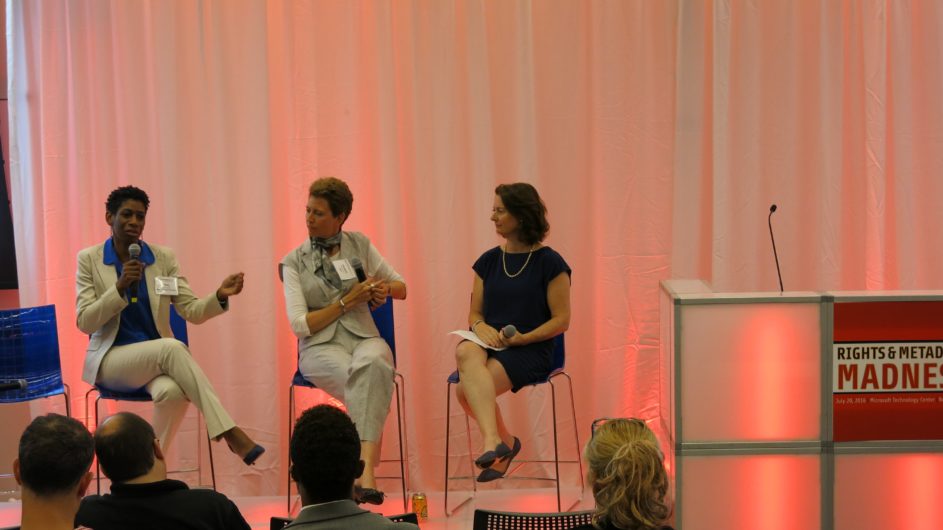Exclusives

Experts: Contract Data Today Needs a New Approach
Story Highlights
A new digital content hub for the performing arts, dubbed nRapt, is just getting off the ground this year. And besides offering consumers streaming performances, interviews and behind-the-scenes offerings, the SVOD platform is also acting as a place where performance industry stakeholders can find content consumption data, opportunities for cross-promotion, and offer links to live performances.
Getting something as complicated as nRapt off the ground requires a new approach to contract rights, especially in an ever-changing digital environment, according to the people behind the service.
“The number of kinds of rights you need to secure to do any type of exploitation can be upwards of 20,” said Elizabeth Scott, CEO of nRapt, speaking at the recent “Rights & Metadata Madness: Where Legal Meets the Digital Supply Chain” even in New York City. “How that’s been documented has not been fantastic. You get this asset and its ‘Optimize this.’”
Scott, a long-time champion of cross-industry content aggregation, has advised groups on new technology platforms and previously served as chief media and digital officer for the Lincoln Center for the Performing Arts, and as a senior media executive with Major League Baseball.
She’s well versed in the complications involved in being precise regarding what you can and can’t do with contract rights.

“We’re not just an organization that’s licensing rights cleared content, we’re also auditing the entire environment of content in the performing arts space globally to understand but for the clearance of these sets of rights, we have these as well,” she said. “We’re allowing content to be unlocked.”
Chey Blake, a business attorney and strategist with more than 20 years experience in intellectual property and media and entertainment law, said nRapt is in a position old companies may be jealous of: there is no legacy equipment, pre-existing software or computer systems, do deal with. nRapt can start from square one when it comes to contract rights management.
“How do we make money off these assets that were intended for [something else]? she said. nRapt can search through the contract language for content, and “make sure you’re not leaving money on the table.”
But even though nRapt has the advantage of being new, nothing is easy with contracts and digital today, Blake added. “It used to be you could write a contract and say ‘I want television rights,’ and you actually knew what that was,” she laughed. “Now we have to [define] what we mean by television. Does that mean streaming? You have to be really specific. You can’t just be a legal writer, you have to be a creative writer.”
When streaming and electronic sellthrough first arrived, almost nobody knew how to handle the rights behind them, she added. “Everybody was trying to fit them into the pegs they already had, and they didn’t really fit,” Blake said. “It’s required at every step … drawing on what you know, but making it different.”
Scott concurred: In her MLB days, Scott remembers how difficult it can be to gather all the assets for any one project. For the film “Moneyball,” she recalled the tough slog involved with gathering all the rights necessary — from MLB, its teams, and more — to make the film realistic.
“It’s a very multi-layered thing,” “Even though the contract may have been clear about when certain images and assets were being used, at the end of the day, we all know that a lot of licensing doesn’t adhere to the letter of the legal agreement.”









